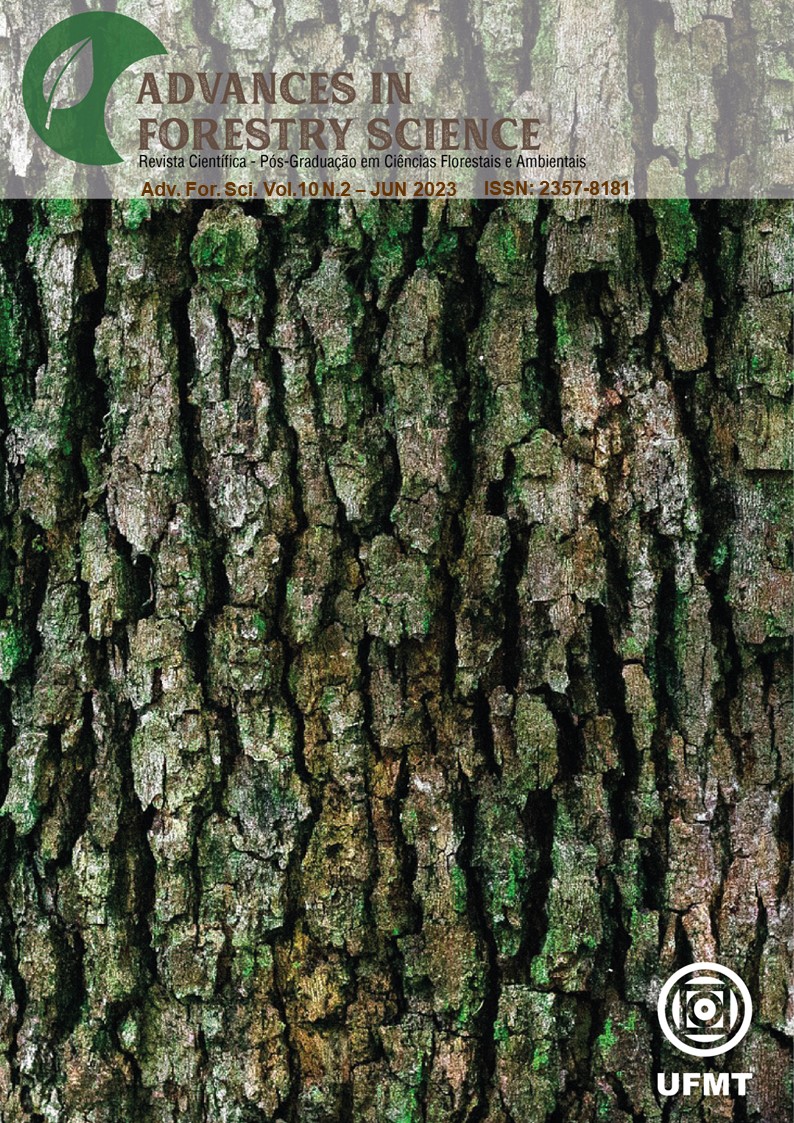Mimosa caesalpiniifolia Benth. as an alternative for wood production in Northeast Brazil
DOI:
https://doi.org/10.34062/afs.v10i2.13983Abstract
Mimosa caesalpiniifolia is a native species from Northeast Brazil, with good soil and climate adaptation, fast growth and potential for multiple use. Because of these characteristics, it has been considered a promising species for forestry. This work aimed to evaluate the growth and productivity of Mimosa caesalpiniifolia at 75 months of age, in a homogeneous plantation located in the state of Rio Grande do Norte, Northeastern Brazil. The data were collected in a 0.05 ha plot with 84 individuals, submitted to thinning at 12 and 55 months. The variables height (H), diameter at breast height (DBH), and diameter at base (DAB) were evaluated. The productivity of the plantation was estimated in terms of total volume (m3) and stacked volume (st), number of stems and mean annual increment (MAI). On average, the individuals were 4.85 m tall, 12.05 cm in diameter at the base (DAB) and 8.42 cm DBH. Each individual presented an average of 6.07 stems. The estimated productivity was 43.88 m³ ha-1, with MAI of 7.02 m³ ha-1 year-1, and the estimated stacked wood volume was 111.89 st ha-1. The results showed the high potential of the species for the production of stakes and fence posts, as well as for the production of kindling and firewood, aiming at the use of all the biomass produced. Therefore, the planting of this species for the production of wood serves as an alternative to meet demands in the Northeast of Brazil.
Downloads
Downloads
Published
Issue
Section
License
All copyright must be assigned to the Federal University of Mato Grosso.

